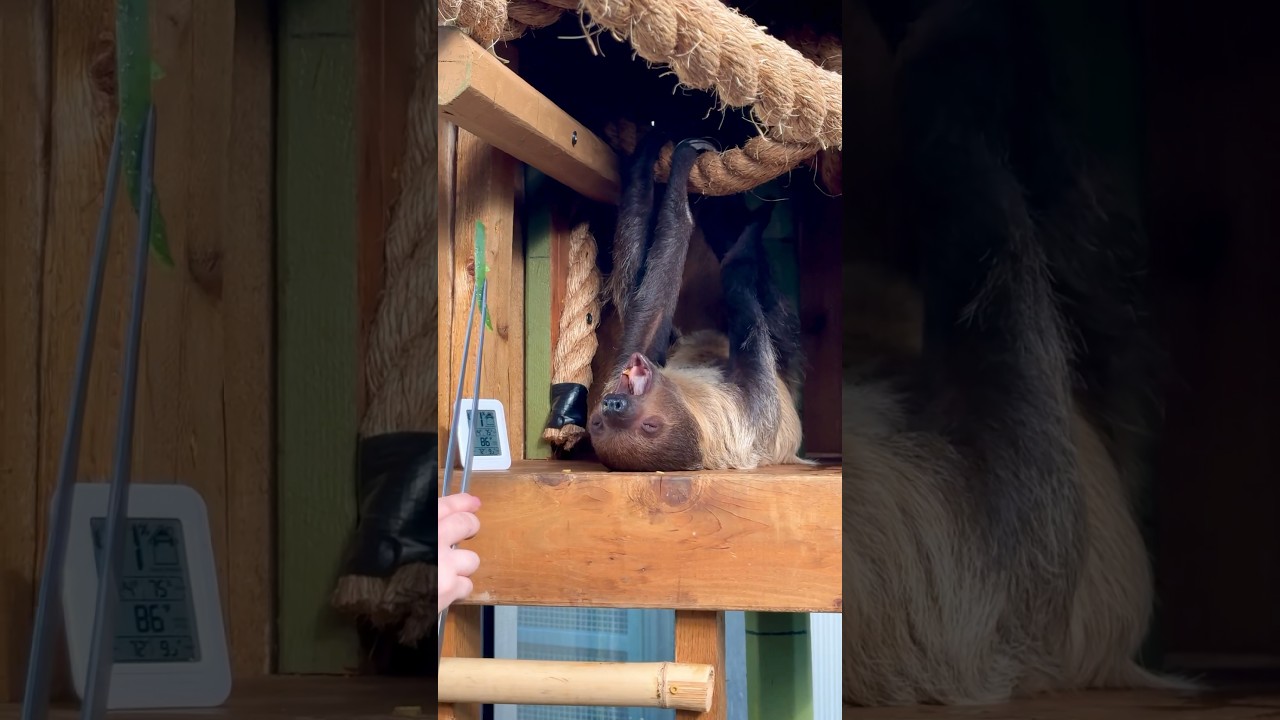– The daily life and habits of sloths and what makes them uniquely slow and relaxed creatures.
– How conservation efforts and zoos contribute to the well-being of sloths and their habitats.
– Engaging anecdotes about sloths, highlighting their peculiar behavior and environmental adaptation.
There is a certain languid charm about sloths that captures the imagination. Anyone who has enjoyed observing these creatures can attest to their timeless grace. But why is it that Sol the sloth, as well as his kin, find it so delightfully easy to stay snuggled in their arboreal beds?
The reasons stretch from the creature’s biology to its chosen habitat. But first, let’s picture the scene: a lush, verdant canopy where the only sounds are the whispers of leaves and the occasional calls of rainforest inhabitants. Now, spot our protagonist, Sol, nestled between the crooks of a ceibo tree, leisurely deciding whether to greet the new day or enjoy just a few more moments in the embrace of his cozy branch.
Sloths belong to the Bradypodidae family, which is apt since ‘brady’ means slow, and ‘podos’ refers to foot in Greek. And slow they are – incredibly so. Research reveals that this slothful speed is an evolutionary adaptation that aligns with a low-calorie diet of leaves. These leaves are not just run-of-the-mill lettuce but the essence of the rainforest’s salad bar, sometimes toxic, often tough, and almost always hard to digest.
These creatures possess a highly specialized four-part stomach that breaks down the leaves slowly, fermenting them and extracting nutrients a bit at a time. This process is so time-consuming that it requires a lot of energy, leaving them with less pep in their step. Furthermore, a sloth’s resting heart rate is a serene 40-50 beats per minute, a tranquil tempo that conserves energy and complements their sedentary lifestyle.
Sloths are also fascinating thermoregulators. Their thick fur, continually populated by moths and algae, provides insulation but also requires them not to expend too much energy on heating or cooling their bodies. They accomplish this by staying in the balmy climes of the rainforest, avoiding the temperature extremes and snuggling into their treetop beds, which act as both home and pantry.
Sol’s reluctance to leave his bed is also a defensive tactic. In the wild, the movement draws attention. For sloths, whose primary defense mechanism is camouflage rather than flight or fight, remaining still is paramount to survival. Predators like the harpy eagle and jaguar and humans are less likely to notice a creature that merges with the canopy and moves only occasionally.
But sloths aren’t always in repose; they come down from their trees once a week for a surprisingly mundane purpose: they descend to the forest floor to defecate. This behavior is one of nature’s grand puzzles since it makes them vulnerable. Why not defecate from the tree, as many birds and primates do? Studies suggest this could be to nourish the soil at the base of their home trees, fostering the habitats they depend upon, or to communicate their presence to other sloths through scent.
Transitioning our gaze to the role that zoos play in the lives of sloths like Sol, these institutions serve as sanctuaries for conservation, breeding, and education. The well-designed zoological parks recreate as best as they can the natural environment for sloths, providing them with similar high trees to climb, a variety of leaves from native trees, and companionship – either from other sloths or different species with whom they would traditionally share their habitat.
Conservation programs in zoos play a crucial role in safeguarding sloths against the threat of habitat loss due to deforestation and climate change. By maintaining genetic diversity and engaging the public in education initiatives, zoos create an invaluable bridge between humans and the mysteries of the rainforest.
Returning to the mesmerizing idleness of Sol, one can’t help but draw parallels to human life – how often do we underestimate the value of slowing down, of conserving our energy for what truly matters? The sloth teaches a lesson: taking life at our own pace, finding balance and understanding our place within the ecosystem.
Their charming faces, too, seem to be etched with a knowing smile, a silent reminder to appreciate the simple, quiet moments of existence. This serenity is not just a byproduct of their lifestyle; it’s weaved into their very beings. The slow heartbeats, the graceful motion through the trees, and the seemingly everlasting naps depict a story of adaptation and survival.
In this beautifully slow rhythm, sloths like Sol make their gentle impression on the world, inspiring wonderment and offering a window into the wonders of evolutionary biology. As we marvel at Sol’s unhurried morning routine, let’s remember the subtle intricacies of nature that have painted such a unique way of life for these lovable creatures and all that we can learn from them.
In conclusion, there’s a bit of Sol the sloth in each of us – perhaps in our yearning for just another moment of rest or our desire to find serenity in the hustle of life. As we peer into the treetops and glimpse a sloth’s leisurely existence, we’re reminded to treasure the world’s remarkable biodiversity and understand the incredible ways each creature fits into the vast jigsaw puzzle of our ecosystem.
Whether it’s affirming the importance of conservation efforts and responsible zookeeping or simply taking a moment to smile at Sol’s reluctance to start his day, these musings on the life of a sloth open our hearts to the broader stories being told all around us in nature. It is a narrative that inspires, uplifts, and, more often than not, reminds us to take it slow.
*****
Source Description

